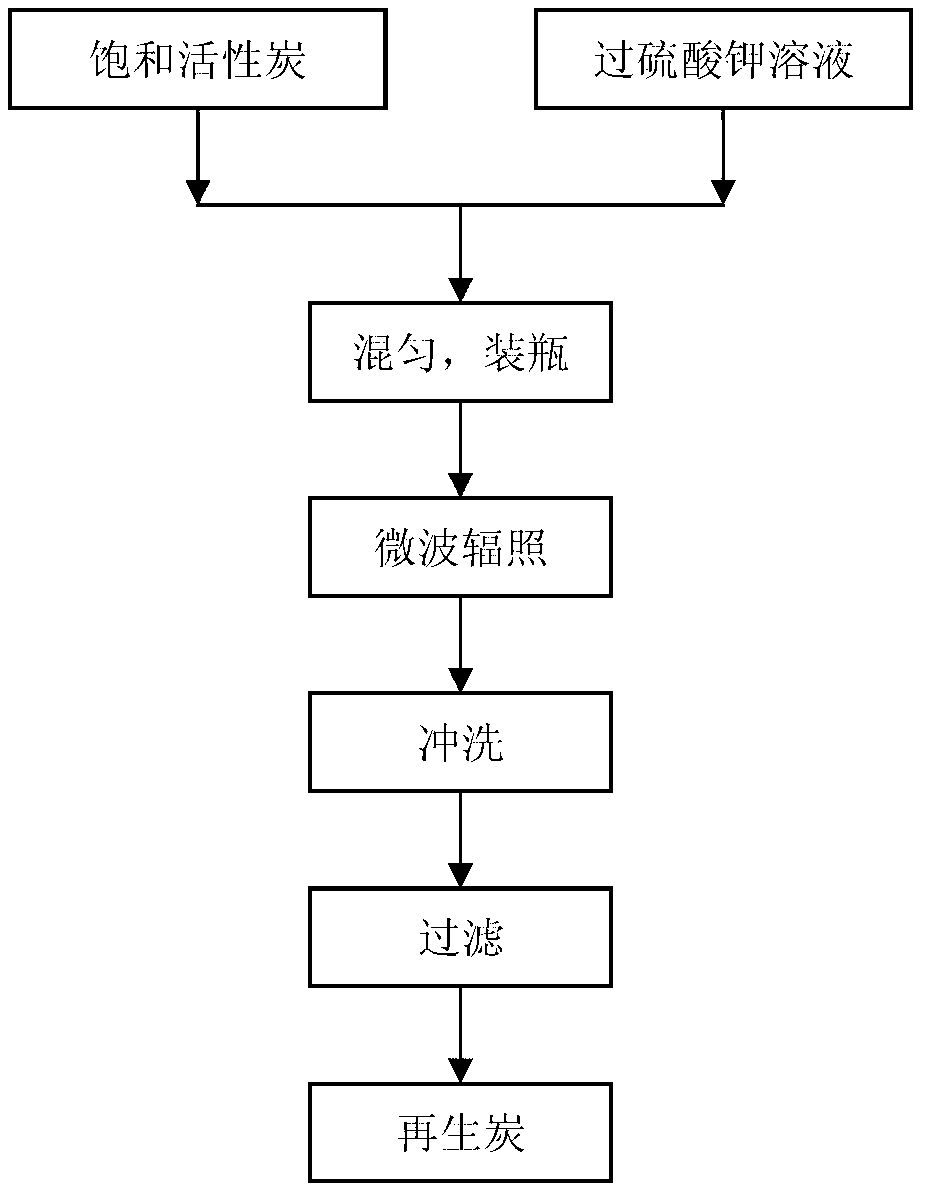Method for regenerating saturated active carbon adsorbing organic matters through microwave activation of potassium persulfate
A technology of potassium persulfate and microwave activation, applied in chemical instruments and methods, filter regeneration, separation methods, etc., can solve the problems of severe reaction between hydrogen peroxide and ferrous ions, inability to achieve complete desorption of adsorbate, and increased difficulty in operation , to achieve the effects of improving microwave utilization, shortening regeneration time, and short oxidation time
- Summary
- Abstract
- Description
- Claims
- Application Information
AI Technical Summary
Problems solved by technology
Method used
Image
Examples
Embodiment 1
[0028] Take new activated carbon into a 500mL Erlenmeyer flask, then pour 300mL of dye biochemical wastewater into the horizontal oscillator at a frequency of 120 rpm for adsorption, and continuously replace the dye wastewater until the activated carbon is saturated, take it out, filter it and dry it at 50°C. Take 5 grams of dried saturated carbon in a polytetrafluoroethylene tank, add potassium persulfate solution so that the mass ratio of activated carbon to potassium persulfate is 1:1, put it in a microwave oven, adjust the power of the microwave digestion instrument to 200W, and irradiate for 10 minutes . Pour out the activated carbon after cooling, rinse the activated carbon with clean water, filter out excess water and dry the activated carbon. Weigh 1 gram of dry regenerated carbon, add 100mL dye wastewater into a 250mL Erlenmeyer flask, oscillate and absorb on a horizontal oscillator at a frequency of 120 rpm for 120min, measure the COD of the wastewater, calculate the...
Embodiment 2
[0031] The same activated carbon as in Example 1 was placed in an activated carbon adsorption tower to absorb dye biochemical wastewater, and it reached full saturation after half a year of continuous operation. Pump 5% potassium persulfate solution into the adsorption tower, and regenerate it by microwave irradiation. After the regeneration is completed, pump clean water for backwashing, wherein the mass ratio of potassium persulfate to activated carbon is 0.6:1, the microwave power is 200W, and the microwave temperature is 90°C. The COD after wastewater adsorption treatment was measured, and the regeneration efficiency was calculated to be 68.3%.
Embodiment 3
[0033] The same activated carbon as in Example 1 was placed in an activated carbon adsorption tower to absorb dye biochemical wastewater, and it reached full saturation after half a year of continuous operation. Pump 5% potassium persulfate solution into the adsorption tower, and regenerate it by microwave irradiation. After the regeneration is completed, clean water is pumped in for backwashing. The mass ratio of potassium persulfate to activated carbon is 0.6:1, the microwave power is 400W, and the microwave temperature is 90°C. The COD after wastewater adsorption treatment was measured, and the regeneration efficiency was calculated to be 78.21%.
PUM
| Property | Measurement | Unit |
|---|---|---|
| power | aaaaa | aaaaa |
| power | aaaaa | aaaaa |
Abstract
Description
Claims
Application Information
 Login to View More
Login to View More - R&D
- Intellectual Property
- Life Sciences
- Materials
- Tech Scout
- Unparalleled Data Quality
- Higher Quality Content
- 60% Fewer Hallucinations
Browse by: Latest US Patents, China's latest patents, Technical Efficacy Thesaurus, Application Domain, Technology Topic, Popular Technical Reports.
© 2025 PatSnap. All rights reserved.Legal|Privacy policy|Modern Slavery Act Transparency Statement|Sitemap|About US| Contact US: help@patsnap.com



